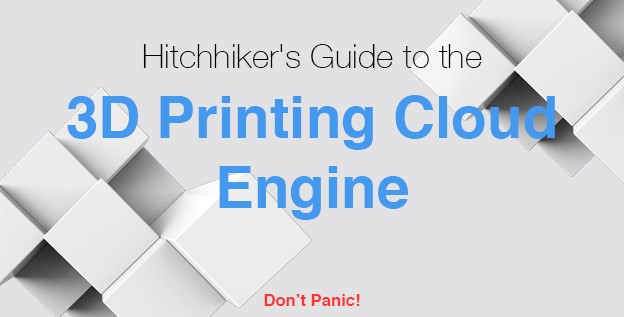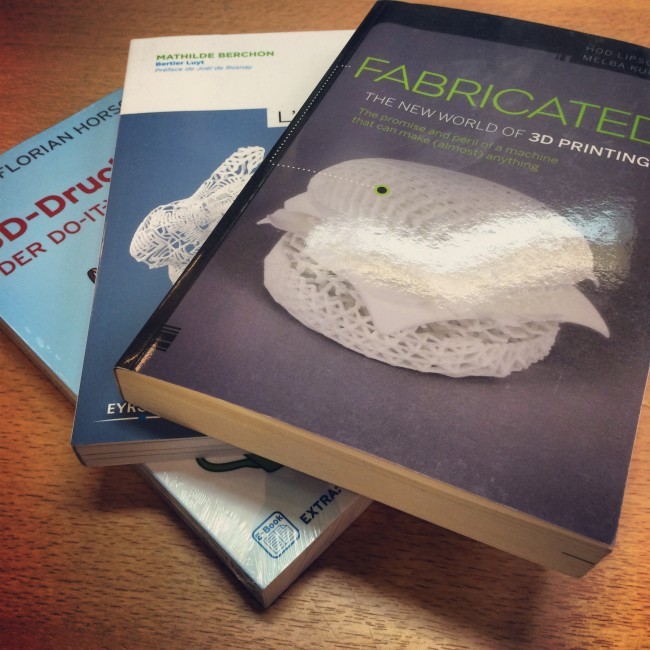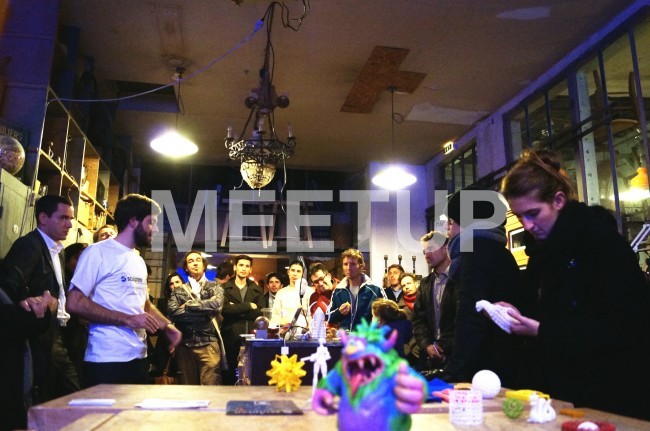The Hitchhiker’s Guide to the 3D Printing Cloud Engine: Vol.1
Posted By Arthur Cassaignau on May 12, 2014 | 0 comments
Hello Everyone, I’m Arthur, Business Developer at Sculpteo, and I’d like to talk about the integration of Sculpteo’s 3D Printing Cloud Engine. It’s been over a year now since I joined Sculpteo, and I’ve seen hundreds of Cloud Integration projects. Some were successful and some weren’t. It came to my mind that now might be a good time to start a series of posts to guide you “through” the process of developing a business with Sculpteo 3D Printing Cloud Engine. Over a few posts, I’ll cover some ground guidelines to help you kickstart your project and avoid the mistakes others have made before you.
This week is all about getting to the ground of it and explaining how to build a successful business with 3D printing. Over five days, I’ll cover 5 guidelines you definitelety want to check more seriously before rushing to the API documentation.
This is the dilemma of every entrepreneur who wants to start a new business: do I have a good product? Is there a market for it? While the second question might not find a direct obvious answer, the first one however requires your most upward attention. 3D printing allows you to cut through the pain, time and cost of traditionnal manufacturing techniques, however it doesn’t mean that you don’t need to test the product you want to sell. Creating a new range of 3D printed products equals the creation of any software or hardware product.
Over a year, I’ve had the chance to meet many hobbyists, makers, entrepreneurs and passionate people about 3D printing. The first thing that strucks me now is that they all had very different levels of maturity regarding their project, and more specificallly they all had different levels of knowledge about 3D printing. Some were already experts and some had just a rough idea of what it meant.
If you want to start a 3D printing business, as for any other business, one key factor is to know the product you’re selling. This means, you’ll need to gather experiences and ressources about 3D printing to know exactly what you’re doing.
Maybe it was something difficult to do 5 years ago, but now there is plenty of 3D Printing everywhere and this is excatly how I started with 3D printing myself before joining Sculpteo.
Read (a lot) about 3D Printing
There are many amazing websites and books about 3D printing. If I just had to recommend a few myself, I would ask anyone wanting to learn more about 3D Printing to read “Fabricated” by Hod Lipson and Melba Kurman (or an equivalent in German – 3D Druck für alle, or in French – L’impression 3D) and to regularly browse through 3D Printing Industry, TCT, Fabbaloo or 3ders.
Go to Meetups about 3D printing
Reading is not enough though. Nothing is better than metting with people who actually works with the industry or in the industry. There are plenty of informal gatherings around 3D printing. Most of them are using the Meetup platform as a way to attract people. At Sculpteo, I helped shape the 3D Printing Meetup by Sculpteo for exemple, and it attracts each time more and more people. Don’t hesitate to go to those meetings, expose your ideas, confront them with people who could actually be your first customers and pay attention to their feedback. As a matter of fact, there is even a 3D Printing Entrepreneurs Meetup in NYC, you could launch the next one in your own city. Meetups, shows and different events really should give you more insights on the business.
Visit a Maker Space
Now that you’ve read about 3D printing and met people who share the same interest as you, it’s probably time to get your hands dirty and visit your first Makerspace. There are now Makerspaces in every big city throughout the world, and wherever you live, you’ll find one close by. This is probably the best way to see a 3D printer in action and get to experience the basics of 3D Printing. For now, most of those spaces are using basic desktop 3D Printers like RepRap, Ultimakers or Makerbot. If you launch a 3D Printing Business with Sculpteo 3D Printing Cloud Engine, you’ll get access to professional printers and high-end materials and finishes, but I strongly suggest you start from here because the basics stay the same whatever the process or the machines. From a personal point of view, I really encourage this approach. For instance, when my interest for 3D Printing grew, I was based in Paris and I started by paying a visit to guys from le Faclab, La Nouvelle Fabrique. Since then, I got the chance to see many different makerspaces for myself or for my work at Sculpteo. Each time, I received critics both positive and negative on what Sculpteo does and how it can improve. I find it sincerely positive, and I think anyone wanting to start a business around 3D printing could benefit from the same relationships.
All in all, those are really simple things to do and they all will give you the chance to test your ideas, confront them to other points of view. But more importantly they will tell you how much you love 3D printing. There are plenty of markets that still need to be disrupted by 3D printing, and very big opportunities to cease. Getting to meet the people that will populate your life directly or indirectly for the next weeks, months or years to come will give you a sense of what’s ahead. If like me, you love it at the first glance, then don’t hesitate. Reading, experiencing, making, creating and meeting people is the best thing you can wish for yourself in your work-related life.
In the end, everyone needs a first time with 3D printing. As many would say, there is no rush. My advise is to take time to experience 3D printing. If you draw an entire business plan over 3 years based on a production technique you’ve never experienced, chances are you’re gonna be wrong. A 3D printed finished product still needs a product development phase, which means understanding the caracteristics of the materials, the different technologies, the feeling of it, etc…But patience, we’ll cover it in the next post.


 Connect with Google
Connect with Google Connect with Facebook
Connect with Facebook


